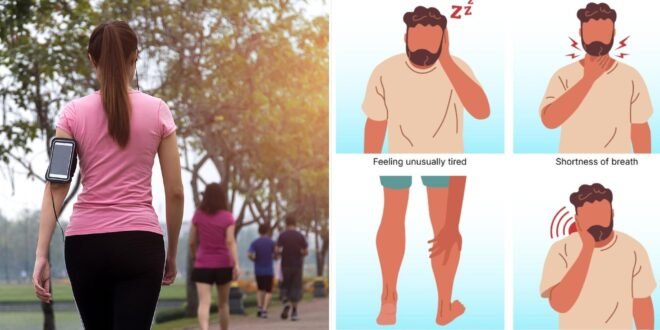The Power of Brisk Walking for Heart Health
Hitting 10,000 steps a day has become a common fitness goal for many people. However, new research suggests that the focus should shift from the number of steps to the pace at which you walk. According to a recent study, taking a daily brisk 15-minute walk could significantly improve heart health and reduce the risk of death by as much as 19%.
The study involved over 79,850 adults from low-income areas in the United States. Researchers found that a short, brisk walk was more beneficial than walking slowly for three hours, even when accounting for overall leisure-time physical activity levels. This finding highlights the importance of walking speed in achieving health benefits.
Experts believe that brisk walking is an effective form of exercise, particularly for individuals in low-income communities who may have limited access to other forms of physical activity. It can help protect against heart disease and other cardiovascular issues.
Cardiovascular Health and Mortality Rates
Recent data has shown a worrying trend in premature deaths caused by cardiovascular problems, such as heart attacks and strokes. These rates have reached their highest level in over a decade. In the UK alone, around 420 working-age individuals die each week due to heart disease, equating to approximately 21,975 deaths annually.
The study analyzed data from the Southern Community Cohort Study between 2002 and 2009. Participants reported how many minutes they spent walking at different speeds. Activities like walking at work or light exercise were categorized as slow walking, while more vigorous activities like climbing stairs, brisk walking, and exercise were considered fast walking.
Over a follow-up period of nearly 17 years, researchers discovered that walking briskly for just 15 minutes a day reduced the risk of all-cause mortality by nearly 20%. The effect was most significant for cardiovascular disease.
Benefits of Brisk Walking
Professor Wei Zeng, the lead investigator, explained that brisk walking can improve the efficiency of the heart and reduce obesity. This type of exercise has also been shown to increase VO2 max, a measure of how much oxygen the body can process during physical activity. A higher VO2 max is associated with better physical fitness and a lower risk of cardiovascular disease.
Prof Zeng concluded that brisk walking is a convenient, accessible, and low-impact activity suitable for people of all ages and fitness levels. It can contribute to improved general health and specifically enhance cardiovascular health.
Encouraging Brisk Walking in Communities
The research team, led by Professor Lili Liu, is urging health officials to promote brisk walking within all communities, especially those with limited access to healthcare. They emphasize the need to address barriers such as safety concerns that may prevent people from engaging in regular physical activity.
Public health campaigns and community-based programs should highlight the importance and availability of brisk walking as a way to improve health outcomes. Individuals are encouraged to incorporate more intense physical activity into their routines, such as brisk walking or other forms of aerobic exercise.
Limitations and Future Research
While the study provides valuable insights, the researchers acknowledged some limitations. For example, physical activity data was only collected at the beginning of the study, so changes in activity levels over time could not be accounted for. Additionally, daily walking levels were self-reported, which may affect the accuracy of the results.
Sedentary Lifestyles and Global Impact
Sedentary lifestyles in the UK, where many people spend long hours sitting at desks and then commuting, have been linked to thousands of deaths each year. The World Health Organization estimates that physical inactivity causes around 2 million deaths globally each year, making it one of the top 10 leading causes of death and disability worldwide.
Physical inactivity is closely linked to various health issues, including cardiovascular disease, obesity, and an increased risk of type 2 diabetes and certain cancers. While there have been improvements in reducing heart attacks, heart failure, and strokes among people under 75 since the 1960s, other factors such as delayed ambulance response times and long waits for medical tests continue to pose challenges.
 Info Malang Raya Its All About World News
Info Malang Raya Its All About World News




